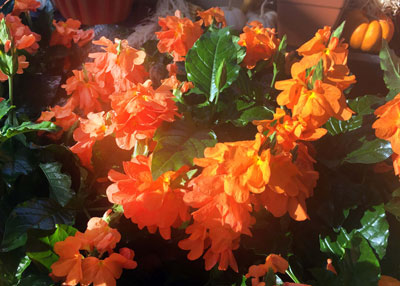Crazy About Crossandras

Photo: Crossandra blooms are highlighted by late afternoon sun.
I was 13 or 14 when I first met this plant. I was in College Station, and it wasn’t easy telling my friends that a plant with orange flowers had really caught my eye. Fact was, my friends didn’t really care much about flowers in the first place. I was marching to the beat of another drum, but that’s another story for another time.
The plant sounded like some lush Latin lady. Crossandra. I was taken by its glossy dark green foliage, and its bloom spikes reminded me of Mom’s homemade orange sherbet. It kept blooming for months. There just wasn’t anything not to like about this small flowering tropical pot plant.
But you never, ever saw this plant in nurseries or flower shops. I read about it in Exotica, my huge tropical plant book. But I couldn’t find it anywhere. I was glad at least I had the one plant.

Photo: Crossandra’s soft orange bloom color is completely compelling.
Times have changed now. Nurseries stock crossandras, probably so they can be used with crotons, pumpkins and Indian corn for fall decorating. And every time I see them offered for sale it brings back great memories. I can’t walk past them and not take photos and buy one or two.
Breeders have brought us many shades of these South Indian plants. While there are some 50 species within the genus, only one (C. undulifolia, formerly known by the strangely melodic botanic name of Crossandra infundibuliformis) is horticulturally important. The orange shades still predominate.
If you’re growing crossandras indoors as houseplants, give them the brightest spot in your house. Use a very loose, highly organic potting soil. Keep them warm (70 to 75 F.) and uniformly moist. They must not be allowed to wilt badly. Apply a high-nitrogen, water-soluble plant food monthly to keep them growing vigorously.
Mature plants grow to be 10 or 15 inches tall and wide, and as long as their needs are met, they keep producing new flower spikes month after month. They can be rooted from cuttings taken in spring during their most active growth.
You can grow crossandras outdoors, but it’s probably best to leave them in pots. That way you can give them bright light in spring and fall and move them back into more shade during the summer. They are intolerant of direct sun when it’s hot.
You’ve probably seen this plant in the past couple of years, and now you know that it’s one you need to have in your own garden or greenhouse.
